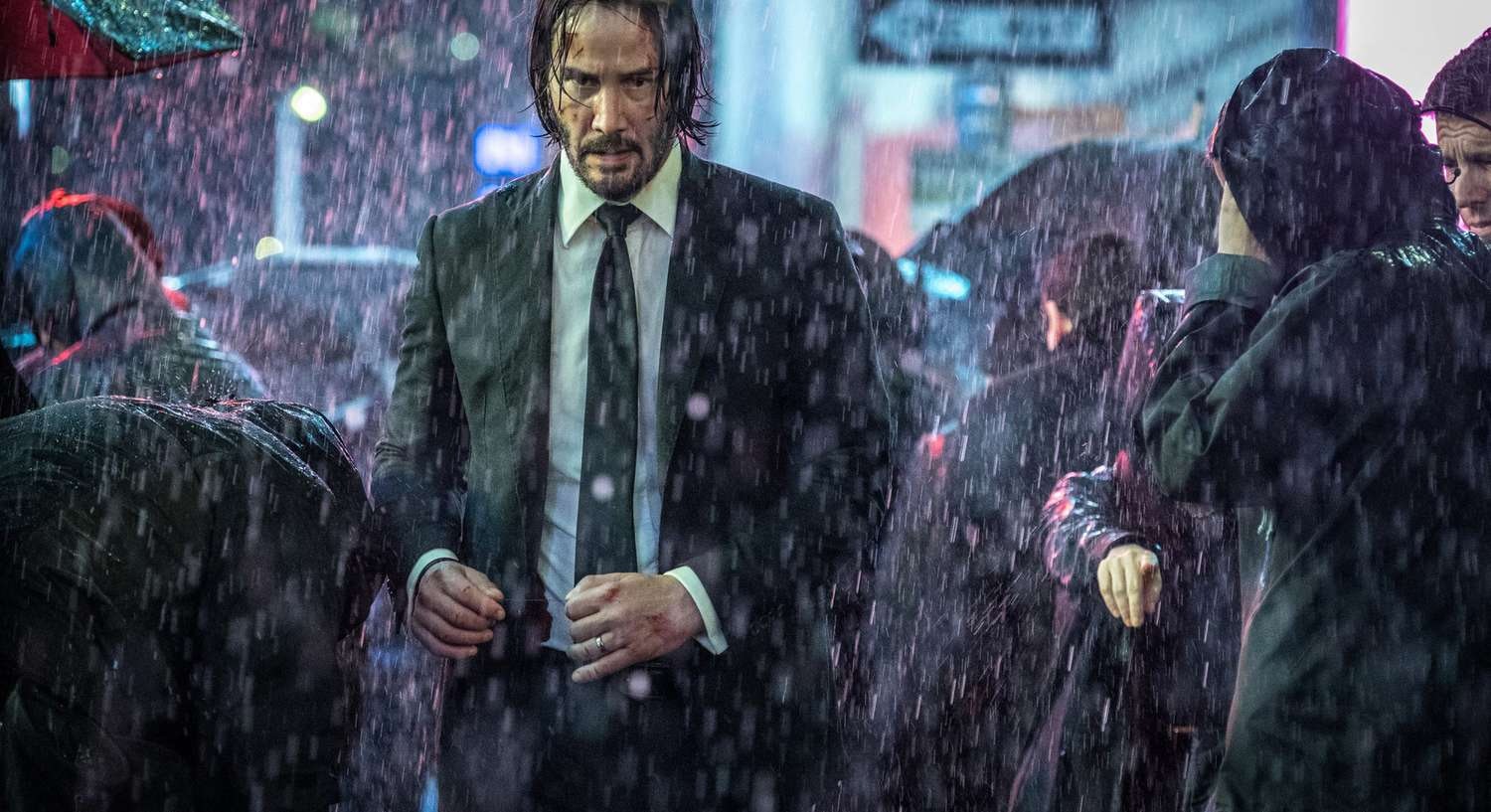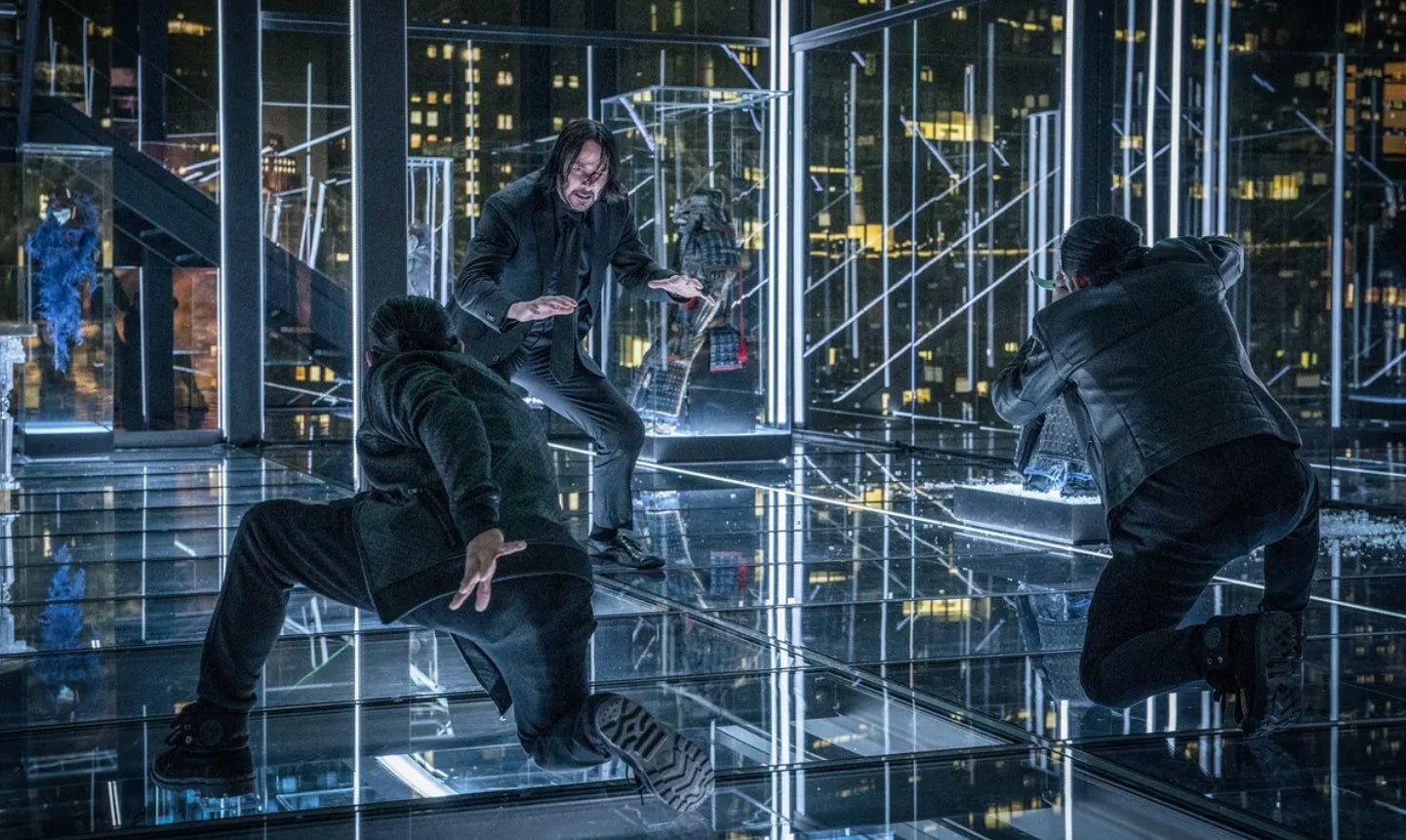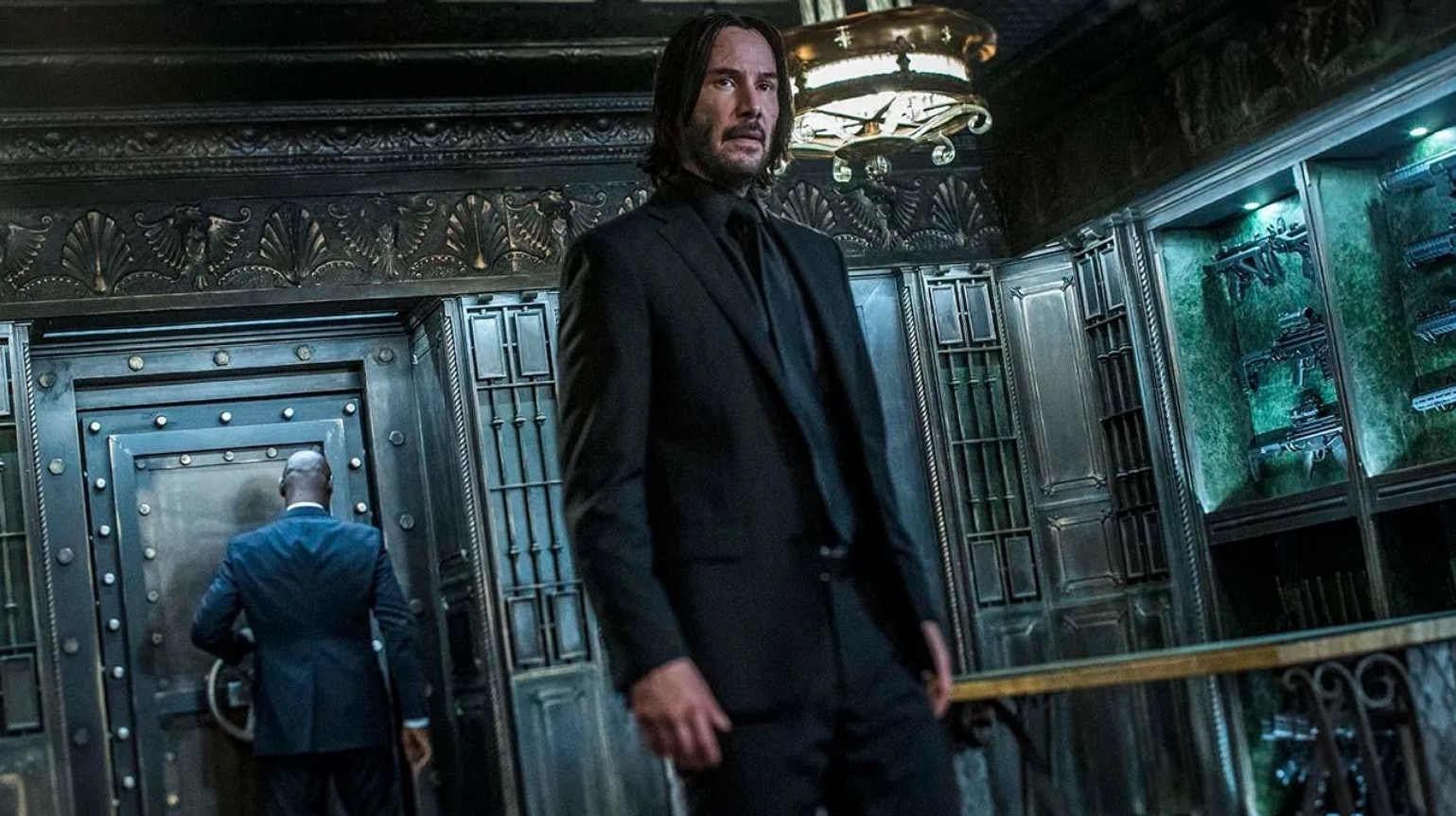
“Gentlemen, this institution is now deconsecrated. Business may now be conducted on Continental grounds.”
In less than five seconds, Asia Kate Dillion’s Adjudicator breaks the boundaries in John Wick Chapter 3: Parabellum. Settling scores with hollow point bullets is fair game in director Chad Stahelski’s world; just don’t do it inside the reverberating halls of New York City’s most prestigious hotel. Parabellum, however, gives way to a choice that rewards us with the franchise’s grittiest action set piece. Disregarding the Continental’s hallowed grounds is the best decision Stahelski ever made.
When the first John Wick movie lit up theater screens, its marketing bore a simple warning for everyone in his path: “Don’t set him off.” No sequence in John Wick represents that notion stronger than Parabellum’s Continental-based finale. As the Byzantine drama between Wick and the crime lords of the High Table reaches a head, the once-neutral territory is declared sacred no more, throwing out the only rule the first two Wick movies treated as implacable.
Stahelski sets it all up for maximum impact, reveling in Parabellum’s tonal shift to that of spaghetti westerns. New York City is the lawless land, and Wick is the lonely drifter in the wrong place. If spending time fixing an old revolver early in the movie hasn’t convinced you, the horseback chase immediately after will do the job. Yet like any Western, there’s always a watering hole to find some semblance of peace.
The Continental isn’t just a haven for the assassin underworld, but a decadent blood-money institution elevated beyond any other societal norms. No matter what kind of criminal you are, the franchise’s echoing theme of rules and consequences weaves itself into the very marble Wick and the rest of his underworld walk upon when they enter the foyer. But marble cracks over time, and Stahelski’s disregard for the Continental’s temple-like reputation is fascinating.
Removing the veil of protection doesn’t threaten Wick; it just prompts him to switch ammo types. To match the heightened stakes, Stahelski leans into the franchise’s video game adjacent tendencies, supplying Wick with waves of elite armor-clad emissaries to dispose of. Wick’s tried and tested method of the trusty headshot doesn’t work, requiring him to target weak spots like an Elden Ring boss fight. With blood running slick on The Continental’s surfaces, a primal atmosphere oozes along Wick’s trail of bodies.

Before Wick’s closest allies rear their heads in Chapter 4, his only co-belligerents are Ian McShane’s Winston and concierge Charon, portrayed by the late Lance Reddick. While Wick’s intentions are honorable, drawing The Continental’s staff into the battle sees Stahelski mercilessly riddle them with gunfire. These people have no emotional ties to Wick, but they're called upon to serve The Continental whether they like it or not.
This underscores the ensuing firefight with a potent dose of dread. When Charon retreats to collect armor-piercing rounds, it isn’t just a tactical move, but an emotionally charged decision to claim retribution. On Wick’s side of the bargain, it's a means to do what Winston believes he does best: “Hunt.”
The score, meanwhile, calls back to the museum battle in Chapter 2, a feat of lean, mean slaughter. But this is Wick unafraid of his mortality and true nature. He’s choosing to bite the hand that feeds, not just because he has to, but because he wants to. His pinpoint accuracy and efficiency are still there, but they aren’t just a show of skill. This is Wick well and truly pissed off.

Keanu Reeves depicts it all with an exhaustion that grounds the assassin and amplifies the physical exertion of laying waste to The Continental grounds. His dismay at being unable to instantly headshot enemies is laughable. To us, fighting The Raid 2’s magnificent duo of Yayan Ruhian and Cecep Arif Rahman is spectacle. For Wick, it’s a household chore.
As The Continental is covered in blood and Wick is flung into near-endless panes of glass, there’s a sense that he’s destroying a historical landmark. Stahelski’s go-to cinematographer, Dan Laustsen, frames the melee with patience, holding his shots longer than Wick can hold his punches. Meanwhile, Parabellum’s densely packed color palette highlights The Continental’s decor to the extent you practically smell the varnish and fresh linen.
By the time Wick reaches The Continental’s rooftop, Stahelski has set up the adventure awaiting in Chapter 4. The fear of The High Table’s global reach is chilling, but for the villains to truly have a chance of burying Wick once and for all, they’ll need to break the rest of their rules. Luckily for them, Stahelski is happy to rip them apart.







